An English major’s experience of art and architecture in Europe
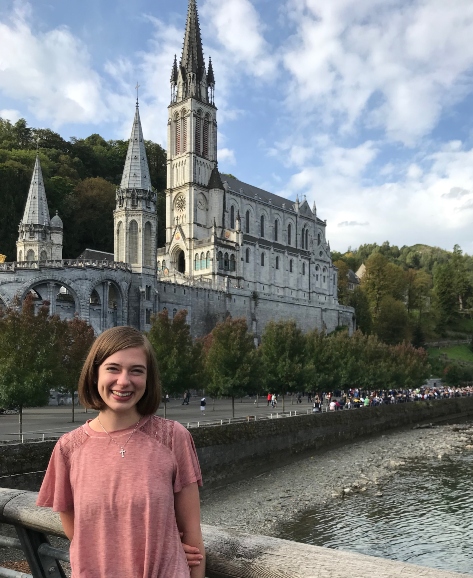
by Rachel Dugan Wood (B.A. English and Theology '21)
When it comes to art and architecture, Rome is a little overwhelming. There are over nine hundred churches and eighty-three museums, together housing millions of artistic treasures. The city is nearly 3,000 years old, which means that ancient temples and amphitheaters still stand alongside modern apartment buildings. Further, often three or more layers of art and history are buried beneath the visible buildings, sometimes dating all the way back to the Roman Republican era (510-31 BC).
Needless to say, I fell prey to the mindset of trying go everywhere and see everything all at once. I’ll admit that on the first weekend I rushed from landmark to landmark, intent on visiting as many as possible before my friends—or my feet—complained. I attempted to justify taking in all that beauty at warp-speed by capturing as much as possible with my camera lens, believing that I could slow down and appreciate it more later. But when “later” did come, I learned once again that photographs do not actually extend an experience beyond the present moment. I found myself with over a hundred pictures of a dozen churches...and few clear memories of any of them.
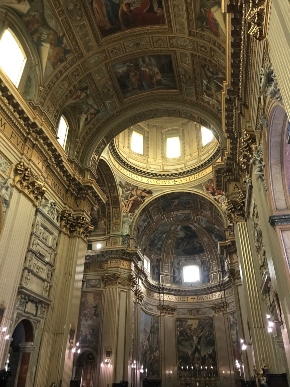
Fortunately, the start of classes went a long way in curing me of this mindset. One person I credit in particular was our Philosophy of Art professor, who inspired—but first forced—us to develop a deep understanding of what we were seeing. During our class’s three-hour foray into the Vatican Museums—that treasure-trove of thousands of the world’s greatest art pieces—I’m pretty sure we looked at about eight of them. But I soon began to realize that one of the greatest benefits of studying abroad in Rome—rather than touring it on vacation—is simply the opportunity to study. Between Philosophy of Art, Liturgical Art and Architecture, and Art and Architecture of Ancient Rome, my classes not only enriched my experience of artistic and historic wonders I visited, but sometimes transformed it entirely. For example, while I knew that Rome’s many Baroque churches are revered for their ornate grandeur, I confess that my initial impression was all that gilding, statuary, and multicolored marble was simply “too busy,” even gaudy. Why was there a cherub stuck in every crevice imaginable? I was impressed to learn that it all had a very clear theological purpose: to manifest the glory of God and give viewers an unmediated view of heaven at a time when faith in the Real Presence of the Eucharist was waning; and to uphold the glories of the saints and Blessed Mother when the Reformation was attempting to strip them away. This knowledge enabled me to look again with new eyes, and I can now say that a Baroque church—Santa Maria in Vallicella, designed in part by Saint Philip Neri—is one of my favorites in the entire city.
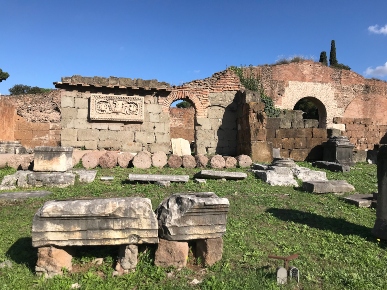
As much as foreknowledge added to my experience of seeing art, architecture, and historical sites, the act of simply being physically present—rather than seeing a photograph of the object or site—added something invaluable too, often to an unexpected degree. As an English major, I am very familiar with the hidden power of language. But studying abroad in Rome gave me my first experience of the equally potent power exerted by the presence of great art and architecture. In our Philosophy of Art class, we discussed an article by philosopher and critical theorist Walter Benjamin, “The Work of Art in the Age of Mechanical Reproduction”—in which he argues that our sense of the one-of-a-kind quality of a painting or edifice is lost when it is captured via photograph and reproduced millions of times. Not only do such reproductions fail to fully capture an artwork, they also result in the loss of what Benjamin calls their “aura,” the genuineness which “is the quintessence of everything about [the artwork] since its creation that can be handed down, from its material duration to the historical witness that it bears.” As I visited celebrated art collections throughout Europe—from the Vatican Museums in Rome to the Louvre in Paris—I was continuously struck by the power exerted by the art objects themselves. One memorable example was the Winged Victory of Samothrace, a Hellenistic statue of the winged goddess of victory, now missing head and arms, that stands at the summit of a large staircase in the Louvre. What I had previously dismissed in the museum guide as “one more limbless Greek statue” nearly bowled me over with its majesty and vivacity. What photograph can truly capture the way the goddess’ tunic billows behind her as she alights, as if in the gales of a mighty storm?
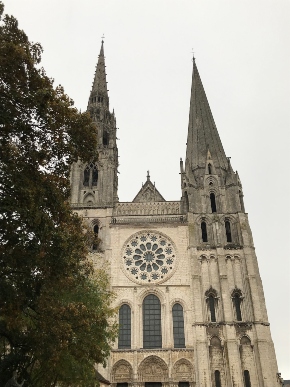
In another case, my direct experience of an 1100s-era architectural wonder—Chartres Cathedral—not only moved me, but also helped me understand the mindset of its builders. Despite having read numerous sources explaining how Medievalists understood God, I only began to grasp what they meant when I approached the imposing doorway of this church. On either side of the frame, great stone saints and martyrs with flat, blockish features and wide eyes stared down at me through the pouring rain. Frightening and captivating at once, they truly seemed like messengers from another world sent to teach and warn. Inside, the unrivaled brilliance of Chartres’ stained-glass windows—considered to be some of the most magnificent in the world—revealed that these people had built a house for a God that they knew to be utterly beyond them in beauty and majesty. But the soaring towers and cavernous size of the cathedral further proclaimed that this was a God of overwhelming, terrifying power. In that space, I not only began to understand what they believed, but also experienced what they might have felt nine hundred years ago.
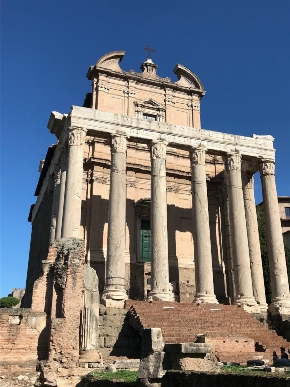
On a final note, if you are an English major thinking about studying in Rome, don’t be afraid to spend a semester doing and seeing things that don’t seem directly related to your major. Your understanding of culture and history will be immensely deepened by your classes and your experiences abroad, knowledge which will enrich your future study of literature. But that is not all. English majors are incredibly fortunate in that they study not only how words are beautifully combined to create poems, plays, and stories; they also study what those literary works are about—the questions that matter most to people in every age. When you see the Ara Pacis, the ceiling of San Clemente, Michelangelo’s Last Judgement, Caravaggio’s The Calling of St. Matthew—you will be seeing how people wrestled with those same questions. And the insights you learn will prepare you to take up those questions anew in literature—and in your own life.
Photo credits: Rachel Dugan Wood
